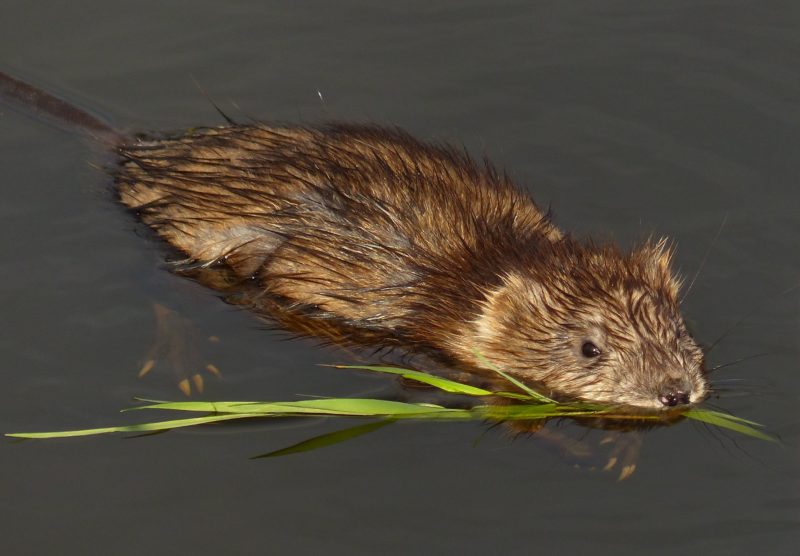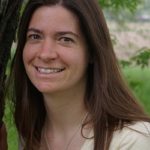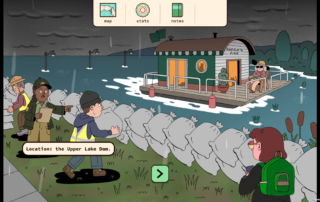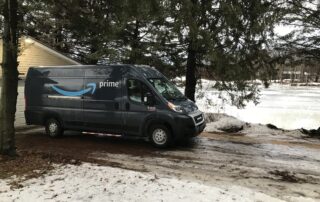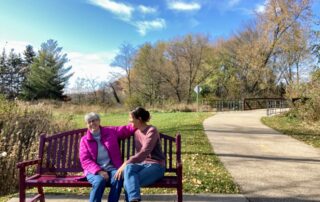Lately, I have been on the trail of a muskrat. Before winter, his muddy mound of a home appeared through the leafless trees in a pond I have largely ignored. In spring, I encountered his tail-dragging tracks near a low bridge and now, in summer, he seems to have vanished. Morning, evening, and afternoon stakeouts by what seems to be a feeding platform—a mat of mud and reeds in a cluster of cattails—has not revealed him.
But since I have begun looking for one thing, I begin to see everything else. While I wait for the muskrat, wood ducklings paddle through the algaed pond as they once did their own yolks. Irregular rows of scented pond lily pads flap like the ruffles of a summer dress in unseasonable winds, showing their red undersides. Blue flag buds, not yet open, purse their petaled lips at my long intrusion. High up in a smooth stag completely shorn of bark a family of pileated woodpeckers ducks angular red heads in and out, square pegs in a dark, round hole. Under three logs nestle clutches of tiny freshwater-pearl-like eggs, either red-backed salamander or land snail, I can’t tell. One night, I hopscotch to the pond through a pleasant plague of microtoads. In one spot, on successive evenings, I rouse a small owl, twin fawns, and a gray tree frog; next to him under a small downed branch hides a blue-spotted salamander. I was looking for a muskrat, but I’ve found a whole ecosystem.
Ecosystem: a term coined less than a century ago when the English botanist A.G. Tansley wrote: “[We] cannot separate [organisms] from their special environment, with which they form one physical system.” A term illustrated further by our own Aldo Leopold. When I worked as a naturalist I hiked the children deep into the woods for a scavenger hunt and asked them to find, in addition to plants and animals, the environment’s abiotic factors: water, minerals, sunlight. We are in the sun, actually: the heliosphere, the sun’s outermost layer, extends beyond the orbit of Pluto, not hard to believe when you venture to the pond in the evening—working specifically around a muskrat’s perceived schedule—and find you can see absolutely nothing due to the glare of the setting sun.
After my long vigils on the weedy shore of the pond I worry about the scavengers on me, ask my husband to take my book light and examine the places I can’t see. We once spent three days, procured a magnifying glass even, trying to assure ourselves that a tiny spot on my left shoulder was not an embedded deer tick, but a freckle. When I return from my bushwacking walks sometimes I shake tiny beetles from my hair, cute speckled ones that wouldn’t make anybody scream. But this is the least of it, really. Like the forest, like the pond, I am an ecosystem, hosting all kinds of microscopic life (mostly beneficial) on and inside me—10,000 species, according to the Human Microbiome Project. So when I seek out the muskrat, regardless of whether I spot his slick-furred foraging, if I see the pond he swims in I see him. For what we consider to be our selves may be a strange invention, a fragile construct between two truer things: the world we harbor and the world we anchor in.
